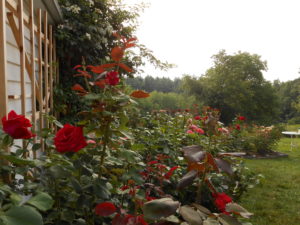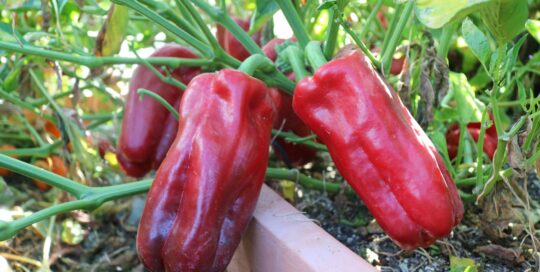August: The Busiest Month in the Garden
Views: 5807

I came back home to Boston from a week on Cape Cod, anxiously wondering about the state of the August garden.
The garden is dedicated to all things edible, except for the occasional tulips, irises, and sunflowers that rooted themselves in years ago. Growing up a farmer’s daughter, I understand that with a little work, some soil, and a bunch of sun I can grow plenty of fresh, tasty, and nutritious veggies in just a few weeks.
With a shady garden-level city apartment, I knew I’d have to get creative if I wanted to grow vegetables. I jumped at the chance to become an urban farmer when a 10-18-foot plot in a nearby community garden became available three years ago.
My post-vacation anxiety wasn’t about water. A few torrential downpours as I left the city, along with the careful eye of a neighbor friend, assured me my garden wouldn’t wither away. Rather, I was imagining the effects of that rain and my week-long absence on the garden’s growth. The rain, the subsequent sun, and the perfectly warm days and nights would unite to give a burst of growth.
Particularly, the growth of the weeds.
August Garden Weeds
Weed-wise, my fears were unfounded. The layer of mulch I had laid down in late May, when all my veggie transplants were still pups, had performed its weed barrier function as it should. Yes, I had weeds—purslane, bindweed and the creeping stolons of ryegrass, just to name a few. But my plot’s soil is as soft, rich, and fluffy as cake batter, thanks to my three seasons of composting and mulching. The well-aerated condition of the soil (its “fluffiness”) makes for easy weeding.
Late-Season Tomatoes
My tomatoes, on the other hand, had added growth like crazy in my absence. Good, right? Yes and no. First, due to a miscommunication with a garden center clerk, I ended up with five 6-packs of tomatoes instead of five pots of tomatoes. Those plus five plants already purchased gave me a staggering 35 tomato plants. I have a lot of tomatoes and not a lot of space.
I’ve had to get creative around caging and staking the growing vines. I’ve caged my three green zebra heirloom and two cherry tomato plants. The 30 others are dealing with a twine-and-stake trellis system. The theory is this: I hoist up the vines to a horizontal length of twine as they grow. It worked well back in June, but as the fruit began to set and the vines became heavier, the horizontal twine began to sag.
On my return from vacation, each plant had several green tomatoes. But the lush, leafy vines were nearly all on the ground. Tomatoes that grow on the ground are more susceptible to disease and don’t ripen fully. So, I then set about hoisting each vine off the ground. Once raised, I also judiciously snipped away leaves that were shading any developing fruit. Tomatoes love sun and develop quickly when exposed to plenty of light in the August garden. All this lifting and snipping will produce a big first tomato harvest for me within days.
But as I pluck summer’s first tomatoes, it’s also time for me to think about my garden’s second season. Seeds of cool-season crops such as lettuce, radishes, beets, spinach, kale, and chard should be planted now for harvesting throughout the fall. I’ll find a spot in my garden that receives dappled sunlight and will allow seedlings to grow without battling summer’s harsh heat. Under the towering sunflowers should be perfect. I knew there was a reason I kept them in my garden.
Meet Ellen Wells
When you’re raised on a farm, you can’t help but know a thing or two about gardening. Ellen Wells is our expert on edible gardening.…
Ellen's Recent Posts

Pepper Red Impact an All-America Selections Winner






